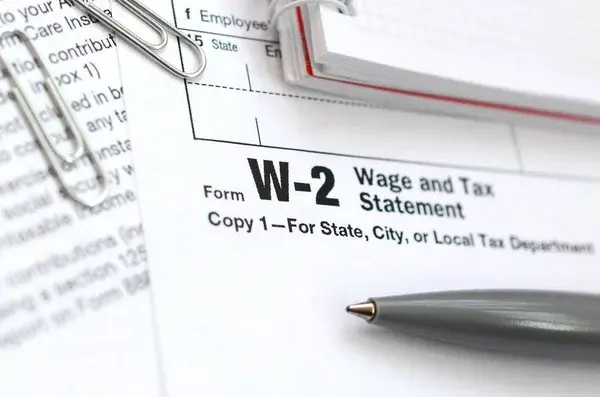ProServ Owners: When to Switch from a 1099 to W2 Employee
Making the leap from relying on 1099 contractors to hiring full-time W2 employees can feel like standing on the edge of a financial cliff. Jump too soon, and you burn cash with little return. Wait too long, and the cost of customer dissatisfaction or missed opportunities will outweigh any savings. Here’s how to figure out the right timing—and do it strategically.

This blog post is for founders of professional services firms scaling their companies: typically $2 million to $10 million annual revenue. It provides the economic and operational reasons for shifting to full-time employees. There are well-documented compliance reasons to make the change based on how independent contractors are utilized, those reasons are not covered in this article..
1. Tradeoff Control vs Flexibility
1099 contractors offer flexibility. You pay for specific tasks and deliverables. Since virtually all that time is billable to a client, you are not paying for any downtime, benefits, payroll taxes, etc. However, with that freedom comes less control.
- Contractors work on their terms. This can become a problem with scheduling and tight deadlines.
- They may do things “their way” instead of “your way”
- They are not really part of your culture and may not be accepted by the rest of your team
- They also tend to work remotely and may not be willing to travel if needed.
Over time, less control can create inconsistencies in service or commitment.
Full-time employees (W2s), on the other hand, give you more control over schedules, priorities, and culture alignment.
- More easily reprioritize an employee, who works under your direction
- You train them to do things the way your company does them, providing consistent customer service
- They are part of your culture and contribute to it
- As their sole source of income, you have leverage of getting them to perform their work properly
When your business needs predictable workflows or customer experiences, W2s become essential.
2. Evaluate Your Workload Consistency
One key question: Is your workload stable enough to justify a full-time hire?
- Fluctuating demand favors contractors.
- Steady growth or consistent needs signal it’s time for a W2.
If you’re consistently using the same contractor for 30+ hours a week, they may as well be on payroll. (The IRS might agree.)
It is important to evaluate this relative to the role you are staffing for. More junior people with less specialized experience may be your first full-time hires as they are easier to staff and cheaper. This is counter to many founder’s thoughts of hiring leadership first, then staffing more junior staff. With fractional jobs becoming more accepted, maybe fractionalize leadership and make junior hires full time.
3. Assess the Financial Impact
Hiring a W2 employee costs more than their salary. Taxes, benefits, training, and onboarding costs add up. Additionally, you are paying your employee’s downtime - time not spent serving clients.
When a particular job consistently requires 20 or more hours per week, its time to consider hiring the employee full time. This translates to roughly 50% utilization, a key performance indicator that should be closer to 75% for more junior staff.
Some other considerations:
-
Do you have a cash buffer? Ensure you can afford their paycheck without jeopardizing your cash flow.
-
What’s the ROI? A W2 hire should either bring in more revenue through billable hours or reduce hours more expensive staff are dedicating to the task. Measure both incremental revenue and cost savings when evaluating the hire
4. Gauge Customer and Team Needs
Are you turning down more and more projects because you lack capacity? Are customers experiencing delays or poor service? If your current team or contractors are stretched too thin, the risk of losing business outweighs the cost of a W2 hire.
You should be measuring your billable teams hours to make sure they are not over utilized. If you staff is 80% or higher it’s time to consider adding staff.
Don’t wait until someone burns out or a key customer leaves to make the move.
5. Think Long-Term: Culture, Scalability and Exit
Full-time employees shape your company culture and can align with your vision in a way contractors often don’t. If you’re planning for long-term growth, you’ll need a team that can scale with you, rather than a revolving door of freelancers.
If an eventual exit is on your radar, having a full-time, engaged team can significantly boost your firm’s valuation. Buyers of professional services firms prioritize people—your team is often the largest driver of value in an acquisition. A stable, well-trained W2 staff signals to potential buyers that your business can sustain and scale its operations without heavy reliance on the founder.
Additionally, you’ll need to demonstrate that your talent sourcing, acquisition, training and retention is capable of sustaining a rapidly scaling company. Building a team now sets the foundation for a stronger, more scalable business—and a smoother, more profitable exit down the line.
6. Avoid Hiring Out of Panic
Panic hiring is a trap that many founders fall into when demand spikes or team members quit unexpectedly. The pressure to fill a seat quickly often leads to a poor match—someone who doesn’t have the right skills, doesn’t align with your culture, or worse, creates friction within your team. These missteps are costly, both financially and culturally.
The Economic Impact:
Mishires can drain cash in multiple ways. For example, let’s say a founder rushes to hire a salesperson during a period of rapid growth. In the haste to fill the role, they choose someone with a flashy résumé but without the skills to close deals in their industry. The new hire struggles, sales suffer, and the founder is forced to let them go after six months. The cost? Six months of salary, benefits, and onboarding expenses—plus lost revenue from missed sales opportunities.
The Cultural Fallout:
Culturally, a mishire can disrupt team dynamics. Imagine hiring a project manager who is a stern taskmaster when your clients and team are used to a more collaborative approach. Their behavior frustrates existing employees, leading to resentment or even attrition. Now, the founder not only has to replace the mishire but may also face the additional burden of rebuilding team morale.
A Better Approach:
Instead of hiring reactively, build a pipeline of potential candidates before you need them. Use part-time or contract roles to test fit before committing to a full-time hire. And most importantly, slow down. It’s better to have a temporary gap than to spend months cleaning up after a bad hire. The time and money you save by waiting for the right person will pay off in the long run.
7. Follow the Rule of 3
The Rule of Three is a straightforward, actionable framework to help founders decide when to transition from using 1099 contractors to hiring full-time W2 employees. It’s based on three essential criteria—workload, cash flow, and business strain—that ensure your decision is both strategic and sustainable.
It is:
- Three months of steady need
- Three months of cash buffer
- Three signs of strain
If you meet all three, it’s time to invest in a W2 employee.
Three Months of Steady Need
Consistency is key when hiring a full-time employee. If your workload fluctuates seasonally or sporadically, a contractor may still be the best choice. However, if the same tasks or responsibilities demand attention week after week for at least three months, it’s a clear sign your business has a persistent need that justifies a dedicated hire.
Why It Matters:
Relying on contractors for ongoing work often results in inefficiencies, as they may not be fully invested or available when you need them most. A W2 employee provides reliability, allowing you to maintain consistent operations and better serve your customers.
Three Months of Cash Buffer
Hiring too early can put your business in a cash crunch. Beyond a new employee's salary, you’ll also need to account for payroll taxes, benefits, onboarding costs, and possibly new tools or equipment. A three-month cash reserve ensures you can pay your new hire without jeopardizing your business’s financial stability, even if growth temporarily slows.
Why It Matters:
Founders often underestimate the true cost of a new hire, leading to cash flow issues. A healthy buffer gives you breathing room and confidence in your ability to grow sustainably.
Three Signs of Strain
If your team or business is showing clear signs of strain—missed deadlines, unhappy customers, employee burnout, or turning down work—it’s time to act. These red flags indicate that your current structure isn’t scalable, and waiting too long to hire could damage your reputation or push employees to their breaking point.
Why It Matters:
Ignoring strain creates long-term consequences. Overworked employees are more likely to make mistakes, and customers who feel neglected may look elsewhere. A full-time hire can alleviate the pressure, ensuring both your team and your clients stay happy.
Why the Rule of Three Works
This framework simplifies a complex decision by focusing on measurable, tangible factors. It forces you to evaluate your business holistically—balancing current needs, financial health, and long-term growth.
By meeting all three criteria, you can confidently move forward with hiring, knowing that the timing is right and the investment is necessary. It’s a guardrail that prevents impulsive decisions, ensuring your business grows intentionally rather than reactively.
When in doubt, revisit the Rule of Three. It’s a reliable guide to help you make one of the most critical decisions in scaling your business.
The Bottom Line
Making the switch from 1099 contractors to W2 employees isn’t about flipping a switch—it’s about timing. Evaluate your workload, cash flow, and long-term goals. When the time is right, a full-time hire can help you grow sustainably while delivering the consistency your customers expect.
Don’t wait until your business is at a breaking point. Be proactive, plan ahead, and hire strategically. Your future self—and your bottom line—will thank you.
